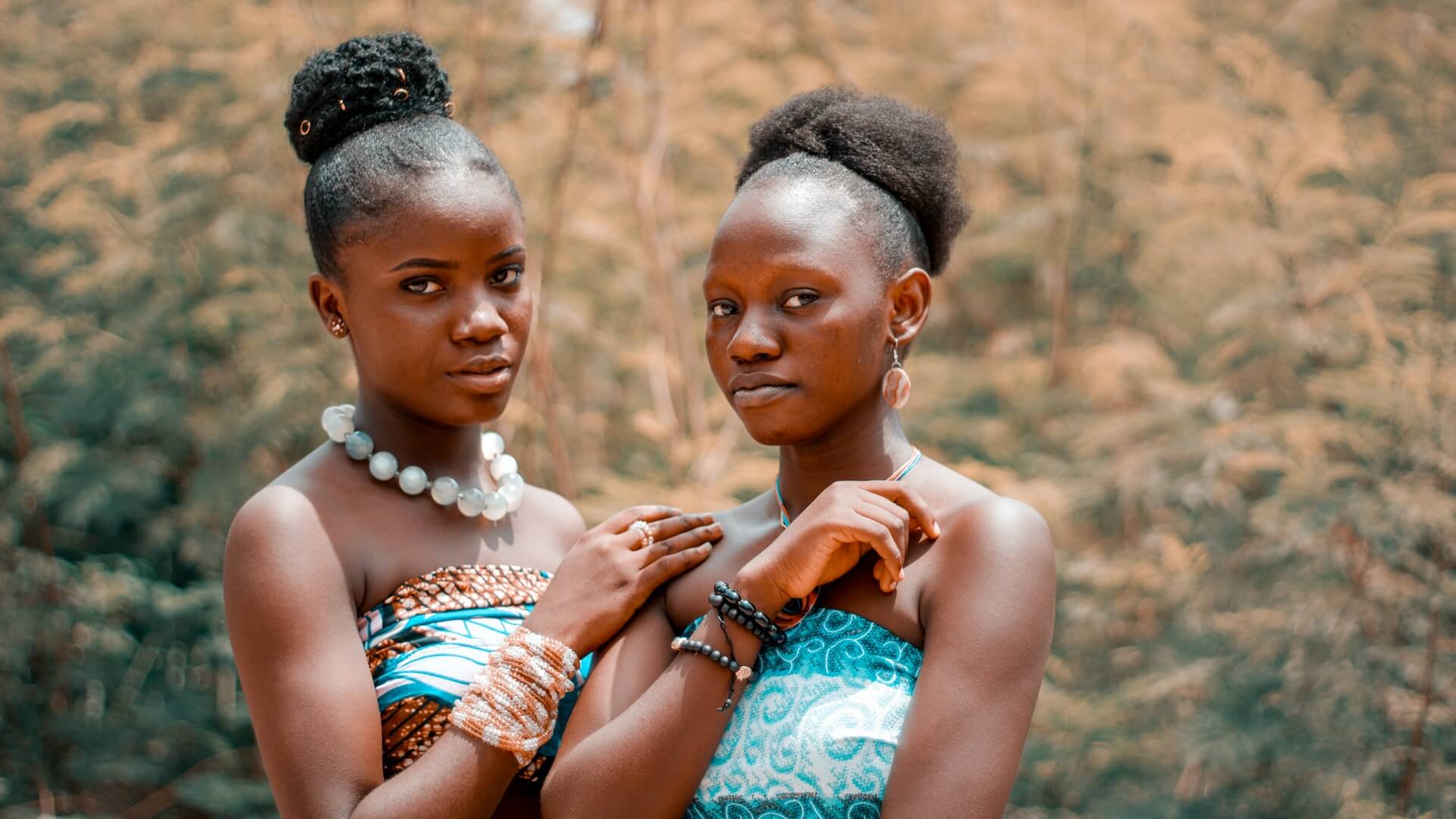From the colorful fabrics of Africa to the intricate mandalas of India, the world is filled with a diverse tapestry of cultures and traditions. Every country and community has its own unique customs, beliefs, and practices that make it special. As we move forward in an increasingly interconnected world, it’s more important than ever to take the time to explore and appreciate this rich cultural heritage. In this post, we’ll take a journey into the vibrant tapestry of diverse cultures from around the globe. We’ll explore the customs, festivals, crafts, and cuisines that make each culture unique and fascinating. Join us on this journey of discovery and appreciation for the beauty and richness of cultural diversity!
The Importance of Cultural Diversity
The world we live in is a vibrant tapestry of cultures, each one unique and beautiful in its own way. Cultural diversity is not only a testament to the rich history and traditions that have shaped our societies, but it is also a valuable asset that should be celebrated and embraced.

One of the key reasons why cultural diversity is important is because it fosters a sense of understanding and tolerance among individuals and communities. When we are exposed to different cultures, we gain a deeper appreciation for the values, beliefs, and customs that shape the lives of others. This, in turn, helps to break down stereotypes and prejudices, promoting inclusivity and harmony.
Moreover, cultural diversity fuels creativity and innovation. When people from different backgrounds come together, they bring with them unique perspectives, insights, and skills. This diversity of thought and experience can lead to fresh ideas, out-of-the-box thinking, and new solutions to complex problems. By embracing cultural diversity, organizations, communities, and even nations can tap into a vast pool of creativity and intellectual capital.
Cultural diversity also plays a crucial role in preserving and protecting our heritage. Every culture has its own traditions, music, dance, art, and cuisine that have been passed down through generations. By valuing and respecting cultural diversity, we ensure that these precious aspects of our collective human history are safeguarded for future generations to appreciate and enjoy.
Furthermore, cultural diversity is an essential driver of economic growth and development. The exchange of goods, services, and ideas across different cultures not only stimulates trade and commerce but also promotes tourism and cultural exchange. By embracing cultural diversity, we can create thriving economies that benefit everyone involved.
Understanding Cultural Identity and Heritage
Culture encompasses various aspects, including language, customs, traditions, beliefs, and values, which are passed down from generation to generation.
Cultural identity is the sense of belonging and identification with a particular group or community. It is shaped by a multitude of factors, such as nationality, ethnicity, religion, and regional influences. Each individual carries their own unique cultural identity, contributing to the overall diversity of our global society.
Heritage, on the other hand, refers to the tangible and intangible elements that are inherited from the past. It encompasses historical landmarks, artifacts, art, literature, music, rituals, and oral traditions, among others. These aspects provide a glimpse into the rich history and legacy of a particular culture, serving as a bridge between the past and the present.
By delving into the understanding of cultural identity and heritage, we gain insight into the customs and traditions that shape the way of life for different communities. It allows us to appreciate the beauty of diversity and fosters a sense of respect and acceptance for one another.
Exploring cultural identity and heritage also provides an opportunity to break down stereotypes and misconceptions. It promotes dialogue, understanding, and empathy, as we recognize the similarities and differences that exist among various cultures.
Moreover, understanding cultural identity and heritage allows us to preserve and protect these invaluable aspects for future generations. It encourages the continuation of traditions, the celebration of diversity, and the recognition of the importance of cultural heritage in shaping our collective identity.
Exploring Different Traditions and Customs
Each culture has its own set of customs that have been passed down through generations, shaping the identity and values of its people.

When you immerse yourself in these traditions, you gain a deeper understanding of the rich tapestry of human experiences. From the vibrant celebrations of festivals to the solemn rituals of religious ceremonies, there is so much to discover and appreciate.
Take, for example, the colorful and joyous Holi festival celebrated in India. This ancient Hindu festival signifies the arrival of spring and the victory of good over evil. People come together to throw vibrant colored powders and water at each other, creating a kaleidoscope of hues and spreading happiness in the air.
Or consider the elegant tea ceremonies in Japan, where the preparation and serving of tea are elevated to an art form. Every movement, from the precise measurement of tea leaves to the graceful pouring of hot water, is a meticulous ritual that reflects the harmony and tranquility valued in Japanese culture.
In some cultures, certain customs are associated with significant life events. For instance, the traditional Chinese wedding ceremony is a grand affair filled with symbolic gestures and rituals. From the bride’s stunning red wedding dress symbolizing luck and happiness to the tea ceremony that pays respect to the elders, every step is carefully orchestrated to honor tradition and create a memorable union.
By exploring these diverse traditions and customs, we not only broaden our horizons but also foster a sense of appreciation and respect for different cultures. It is through these traditions that we find a unique window into the values, beliefs, and histories of communities around the world.
The Significance of Cultural Exchange and Cross-Cultural Influences
As human beings, we have an innate curiosity to explore and learn about different cultures, traditions, and ways of life. This curiosity leads us to engage in cultural exchange, where we share and exchange ideas, practices, and values with individuals from diverse backgrounds.
The significance of cultural exchange goes beyond simply acquiring knowledge about different cultures. It fosters mutual understanding, empathy, and appreciation for one another. By immersing ourselves in the customs, beliefs, and rituals of other cultures, we gain a deeper insight into the complexities of human existence and the multitude of perspectives that exist in the world.
Cross-cultural influences further enrich our understanding of culture. As different cultures interact and intersect, they inevitably impact and shape one another. This exchange can manifest through various channels such as language, arts, cuisine, fashion, music, and more. For example, the fusion of different musical genres in the realm of world music or the blending of culinary traditions in the creation of fusion cuisine exemplify the transformative power of cross-cultural influences.
Moreover, cultural exchange and cross-cultural influences allow us to challenge our own assumptions and broaden our horizons. By embracing diverse cultural perspectives, we move beyond the limitations of our own cultural upbringing, fostering personal growth and expanding our capacity for empathy and tolerance.
In today’s interconnected world, cultural exchange has become more accessible than ever. With the advent of technology and the ease of travel, individuals from different corners of the globe can connect and share their cultural heritage. This exchange of ideas and experiences has the potential to break down barriers, bridge divides, and promote a sense of global unity.
Challenges and Benefits of Preserving Cultural Heritage
One of the main challenges in preserving cultural heritage is the threat of globalization. With the influence of dominant cultures and the homogenization of societies, traditional practices, languages, and customs are often at risk of fading away. The rapid pace of technological advancements and urbanization further exacerbate this challenge, as younger generations may be disconnected from their cultural roots.

Financial limitations also pose a challenge to cultural preservation. Many heritage sites and artifacts require ongoing maintenance and conservation efforts, but funding for these endeavors can be scarce. Additionally, the lack of awareness and understanding of the importance of cultural heritage by governments and communities can hinder preservation efforts.
Despite these challenges, the benefits of preserving cultural heritage are profound. Cultural heritage serves as a link to our past, providing a sense of identity, belonging, and continuity. It fosters a deeper understanding and appreciation of different cultures, promoting tolerance, empathy, and respect. Moreover, cultural heritage has the potential to drive tourism, stimulate local economies, and create job opportunities.
Preserving cultural heritage also contributes to the sustainable development of communities. It empowers local communities, as it encourages the transmission of traditional knowledge, craftsmanship, and skills from one generation to another. This not only safeguards cultural practices but also supports the livelihoods of artisans, craftsmen, and other cultural practitioners.
Moreover, cultural heritage has the power to inspire creativity and innovation. By drawing upon traditional practices and knowledge, it can serve as a foundation for contemporary artistic expressions, design, and architecture. This fusion of the old and the new not only enriches our cultural landscape but also pushes the boundaries of creativity.
Promoting Cultural Appreciation and Respect
As we embark on our journey into different cultures and traditions, it is crucial to approach them with an open mind and a genuine desire to learn and understand.
One way to promote cultural appreciation is through education. By providing resources and information about different cultures, we can help people gain a deeper understanding of the customs, beliefs, and practices that shape a particular community. This can be done through workshops, seminars, or even online platforms that offer insights into various cultural aspects.
Another important aspect of promoting cultural appreciation is through fostering dialogue and interaction among different communities. Creating opportunities for people from different backgrounds to come together, share their experiences, and engage in meaningful conversations can help break down barriers and build bridges of understanding. This can be achieved through cultural festivals, community events, or even simple gatherings where individuals can exchange ideas and perspectives.
In addition, promoting cultural appreciation also means respecting the traditions and practices of other cultures. It is essential to approach cultural differences with sensitivity and avoid appropriating or commodifying aspects of a particular culture without understanding their significance. By honoring and respecting the traditions of others, we can create an environment of inclusivity and acceptance.
Traveling as a Means to Experience Diversity and Traditions
When we step outside our comfort zones and explore different countries and communities, we open ourselves up to a world of experiences that can broaden our horizons and deepen our understanding of humanity.

One of the most beautiful aspects of traveling is the chance to witness and participate in local traditions and customs. From colorful festivals that celebrate ancient rituals to traditional ceremonies that have been passed down through generations, every destination has its own unique cultural heritage to share. Whether it’s witnessing the vibrant Holi festival in India, partaking in the sacred tea ceremony in Japan, or dancing to the rhythmic beats of African drumming, these experiences allow us to connect with the essence of a place and its people.
Beyond the allure of iconic landmarks and famous attractions, it is the everyday encounters with locals that truly bring cultural diversity to life. Talking to people from different backgrounds, sharing meals with them, and learning about their customs and way of life can be incredibly eye-opening. It is through these meaningful interactions that we gain a deeper appreciation for the similarities and differences that exist across cultures.
Moreover, traveling provides a platform for cultural exchange and mutual learning. As we engage with different traditions and immerse ourselves in local communities, we also have the opportunity to share our own cultures and perspectives. This exchange of ideas, beliefs, and values fosters understanding, tolerance, and respect.
The Role of Education in Cultural Understanding
In today’s interconnected world, where globalization has brought people from different backgrounds closer than ever before, it is essential to equip individuals with the tools to understand and navigate cultural diversity. Education provides a platform for individuals to explore and learn about different cultural practices, histories, and belief systems.
One of the key benefits of education in promoting cultural understanding is the exposure it provides. Through textbooks, literature, and multimedia resources, students can learn about the customs, languages, arts, and traditions of various cultures. This exposure helps break down stereotypes and promotes a more inclusive and accepting society.
Moreover, education enables individuals to engage in meaningful cross-cultural dialogues. By learning about different cultures, students can engage in discussions, share perspectives, and challenge their own preconceived notions. This dialogue fosters mutual understanding, empathy, and promotes a sense of global citizenship.
Beyond the classroom, educational institutions can also facilitate cultural exchange programs, study abroad opportunities, and immersive experiences. These experiences allow students to directly engage with different cultures, interact with locals, and gain a firsthand understanding of their way of life. Such experiences can be transformative, broadening perspectives and deepening cultural awareness.
Conclusion
Our journey has taken us through diverse communities and traditions, showcasing the beauty and uniqueness of each. By embracing and celebrating diversity, we can foster a more inclusive and understanding society. Remember, cultural appreciation is a lifelong journey, and there is always more to learn and discover. Let us continue to embrace and respect the diversity that surrounds us, and may this journey inspire you to explore and appreciate the richness of cultures around the world.



